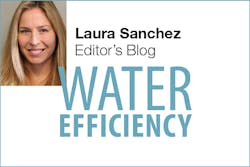An Inconclusive Conclusion: EPA’s Fracking Study
EPA recently released the final version of its report on the potential impacts of hydraulic fracturing on water sources. The new version, the culmination of six years of research, reveals gaps in substantive data and excludes a statement printed in the earlier draft report that it found “no evidence that fracking systemically contaminates water” supplies.
“EPA scientists chose not to include that sentence,” Thomas Burke, the EPA’s science adviser and deputy assistant administrator of the agency’s Office of Research and Development told the New York Times. “The scientists concluded it could not be quantitatively supported.”
The report suggests the possibility that fracking for oil and gas could affect local drinking water. But it explains that certain avoidable conditions are more likely to result in drinking water contamination than others—circumstances such as those created by chemical spills, improper wastewater storage, or mechanical failures while drilling wells.
“The things that are outlined in the report generally deal with things that happen when there’s either an accident or the rules weren’t followed,” said Rick Bender, executive adviser for the Department of Energy Development and Independence and chair of the state’s Oil and Gas Workgroup. “So if you construct your pits properly, if you construct your wells properly, you minimize any chance of groundwater contamination.”
The report’s release is timely. It comes as President-elect Donald Trump, a proponent of oil and gas development who promises to expand fracking and loosen regulations, prepares to take office. This means that going forward, his team of advisors will have to contend with the study’s cautionary scientific findings.
While the EPA found some cases of contamination, it concluded that there was not enough substantive data to determine that the drilling technique posed a threat to water supplies. The agency further explained that its conclusions were restricted by available information:
“Data gaps and uncertainties limited EPA’s ability to fully assess the potential impacts on drinking water resources both locally and nationally…. Because of these data gaps and uncertainties, as well as others described in the assessment, it was not possible to fully characterize the severity of impacts, nor was it possible to calculate or estimate the national frequency of impacts on drinking water resources from activities in the hydraulic fracturing water cycle.”
These information gaps leave many unanswered questions for researchers, policy makers, the oil industry, and citizens alike. What are your thoughts?
